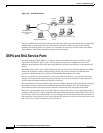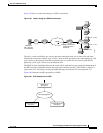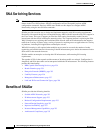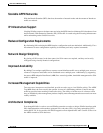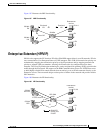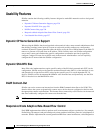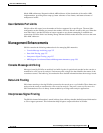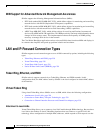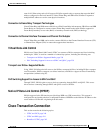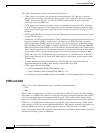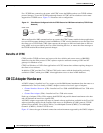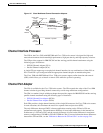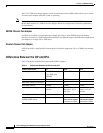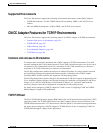
Overview of IBM Networking
LAN and IP-Focused Connection Types
BC-238
Cisco IOS Bridging and IBM Networking Configuration Guide
78-11737-02
MIB Support for Advanced Network Management Awareness
SNASw supports the following Management Information Bases (MIBs):
• IETF draft standard DLUR MIB (RFC 2232), which defines objects for monitoring and controlling
network devices with DLUR (Dependent LU Requester) capabilities.
• IETF draft standard APPN MIB (RFC 2455), which defines objects for monitoring and controlling
network devices with Advanced Peer-to-Peer Networking (APPN) capabilities.
• APPN Traps MIB (RFC 2456), which defines objects for receiving notifications from network
devices with APPN and DLUR capabilities. This MIB proactively send traps with information about
changes in SNA resource status. This implementation reduces the frequency of SNMP polling
necessary to manage SNA devices in the network.
The CiscoWorks Blue Maps application retrieves relevant SNASw data from these MIBs and displays it
in a manner that simplifies and speeds up problem isolation and resolution.
LAN and IP-Focused Connection Types
SNASw supports several connection types to serve all SNA connectivity options, including the following
types:
• Token Ring, Ethernet, and FDDI, page 238
• Virtual Token Ring, page 238
• Virtual Data-Link Control, page 239
• Native IP Data-Link Control (HPR/IP), page 239
Token Ring, Ethernet, and FDDI
SNASw natively supports connectivity to Token Ring, Ethernet, and FDDI networks. In this
configuration mode, the MAC address used by SNASw is the local configured or default MAC address
of the interface.
Virtual Token Ring
Using virtual Token Ring allows SNASw access to SRB, which allows the following configuration:
• Attachment to Local LANs, page 238
• Connection to Frame Relay Transport Technologies, page 239
• Connection to Channel Interface Processor and Channel Port Adapter, page 239
Attachment to Local LANs
Virtual Token Ring allows you to connect to local LAN media through SRB technology. Because there
is no limit to the number of virtual Token Ring interfaces that can connect to a specific LAN, this
technology allows configuration of multiple MAC addresses, which respond to SNA requests over the



